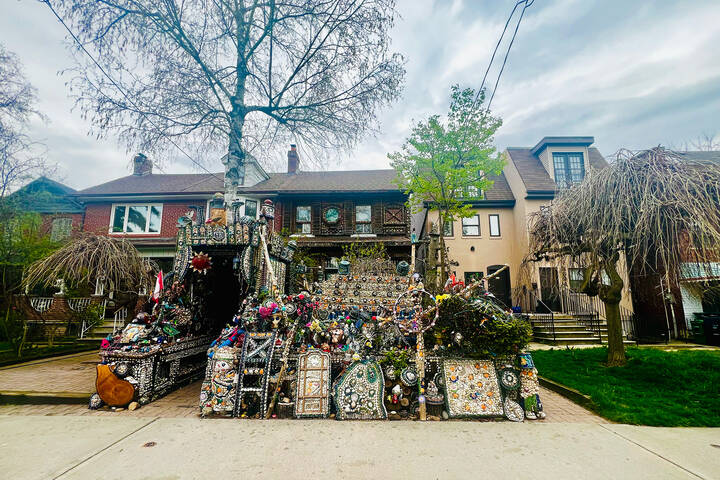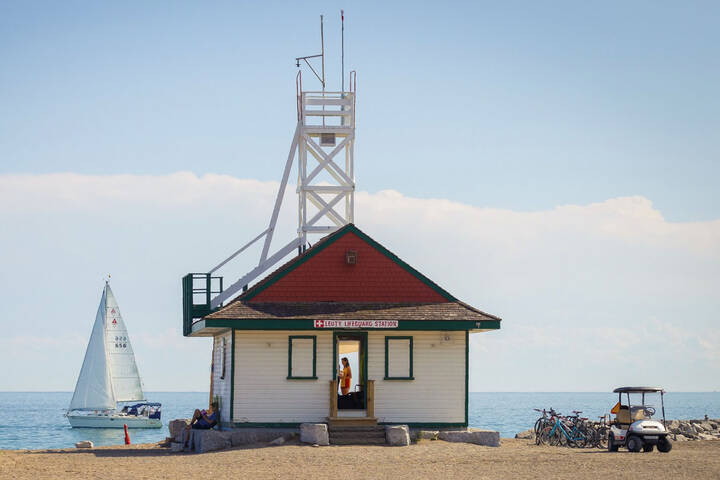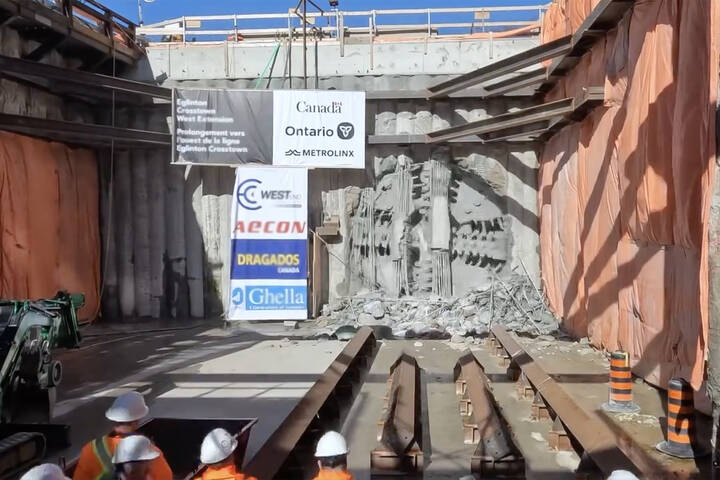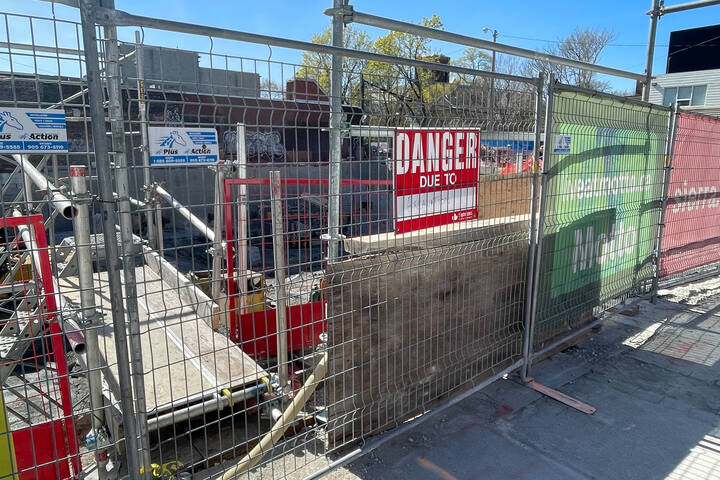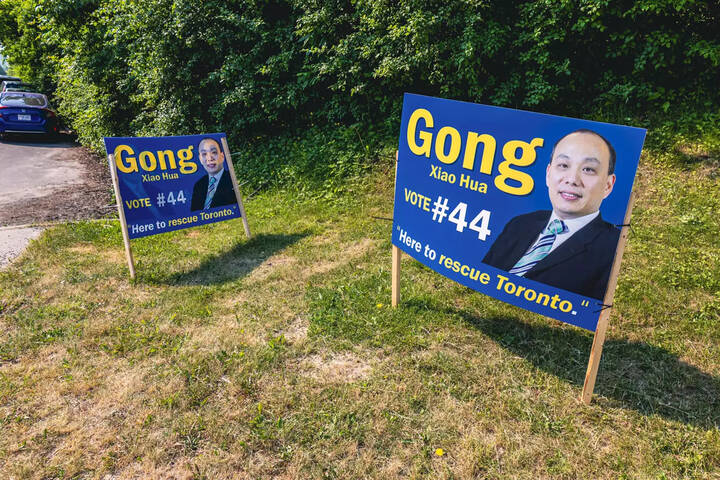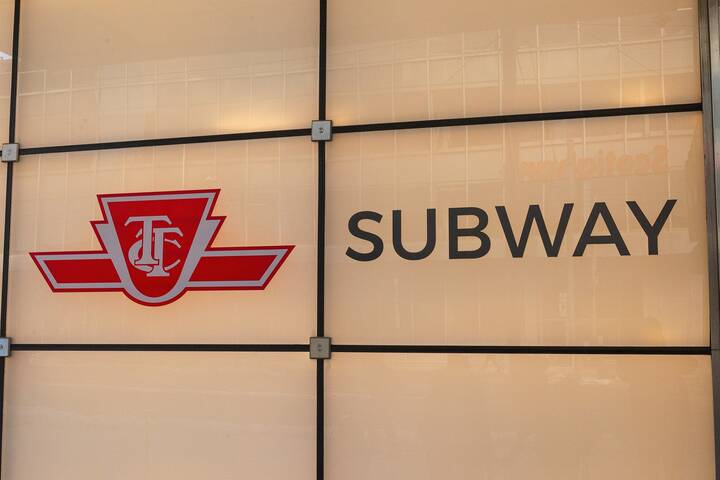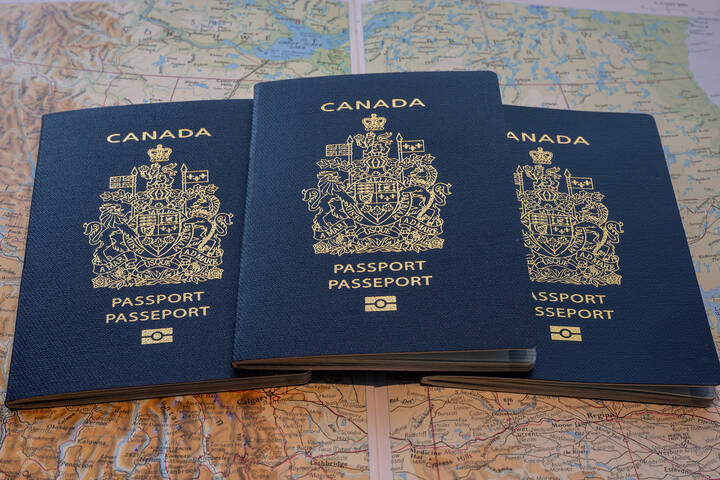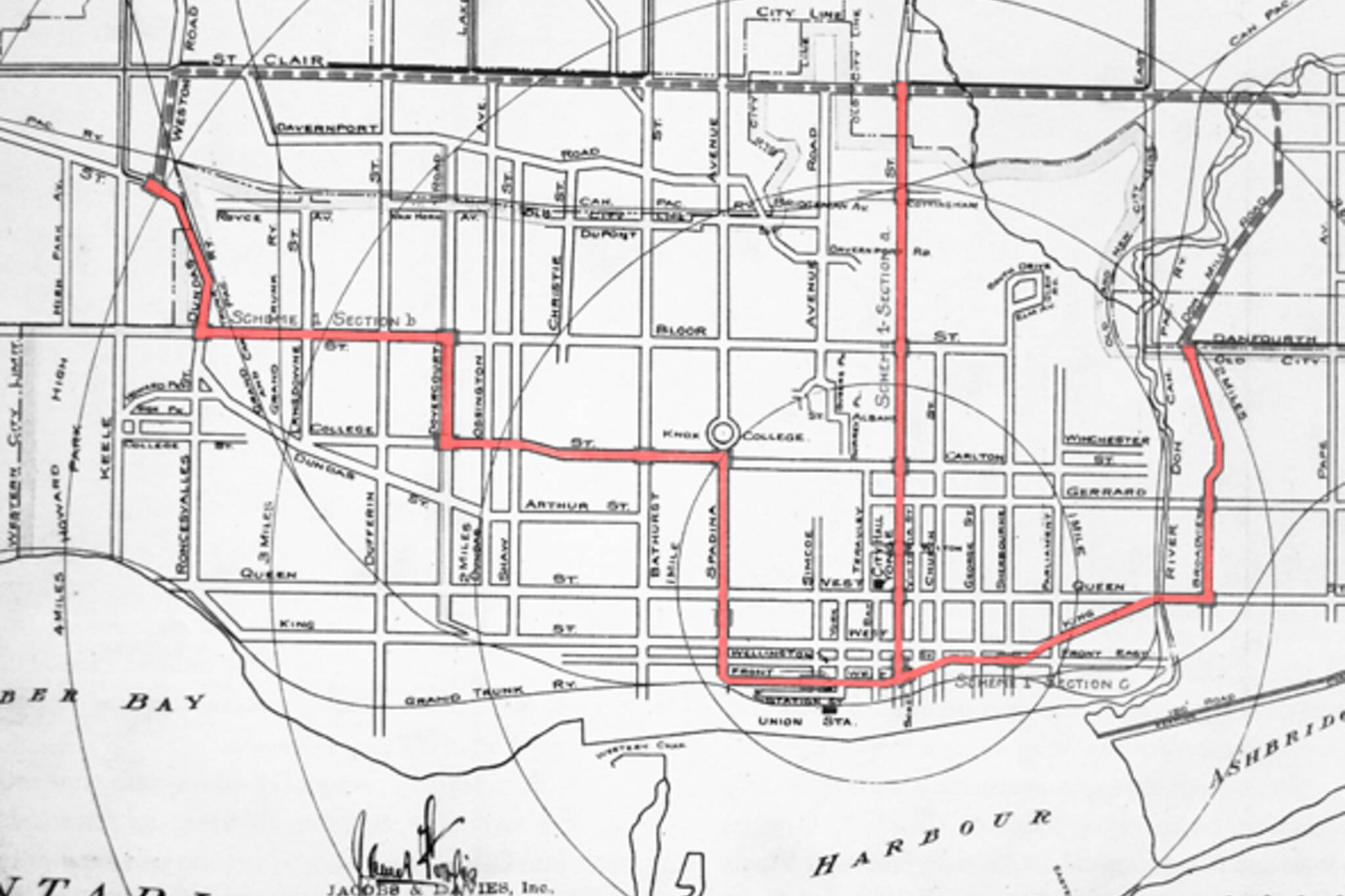
The route the Toronto subway might have taken
Although Toronto would get Canada's first subway in 1954, plans to bring underground rapid transit to the city had been in the works for some time before construction began on the 12 stations that made up the original Yonge Line. As Mark Osbaldeston explains in his recently released book, Unbuilt Toronto II, one of the reasons the City was eager to build a subway was to diminish the stronghold of the privately-owned Toronto Railway Company (TRC), which had signed a 30 year lease to run streetcars in Toronto back in 1891.
I won't lift the entire story from Osbaldeston (you should buy his book!), which examines the ill-fated plans to build a more thorough radial railway network in Toronto at the expense of a subway system, but it's worth pausing on the subway plan of 1910 if only for the sake of historical curiosity. After the issue of provincial approval for a Toronto subway was endorsed by Toronto voters in the 1910 municipal election, the province played along by passing a bill to allow the city to proceed with its plans.
Two months later, city council would commission New York engineering firm Jacobs and Davies to put together a study of Toronto's transportation infrastructure. Although the report defied public sentiment in claiming that the TRC did an adequate job of accommodating the city's needs, the firm also included a proposal for a future subway, which it argued would be needed soon enough.
Depicted on the map above, Jacobs and Davies plan consisted of three distinct lines: one in the west running from Dundas and Keele, a central line up Yonge to St. Clair, and an eastern route starting at Broadview and Danforth. After initial construction was complete, a connecting line across St. Clair could be built to tie the whole system together.
Needless to say, the plan would never come to fruition. By 1915, a report written the City's Commissioner of Works R.C. Harris and others would stipulate that Toronto didn't require a fully fledged subway system and that resources should be spent on the type of "semi-rapid transit" that radial railways could provide. That's an intriguing bit of local history Osbaldeston has dug up for us given that Harris has often been credited as a forward-looking genius for the inclusion of the subway deck on the Bloor Viaduct, which was completed in 1918.
The Jacobs and Davies subway plan may have been short-sighted in thinking of St. Clair as the northern terminus of Toronto, but had its more east-west friendly proposal come to be, Toronto would likely have something much more akin to the grid-like subway coverage that cities like New York and Paris enjoy. One can always dream, right?
Map from the Toronto Archives (red highlights added after the fact). For a larger version, check out my Flickr page.
Latest Videos
Latest Videos
Join the conversation Load comments
